Skip to main contentOperations Views
Designed to help users make sense of the collected data.
1. Analytics View
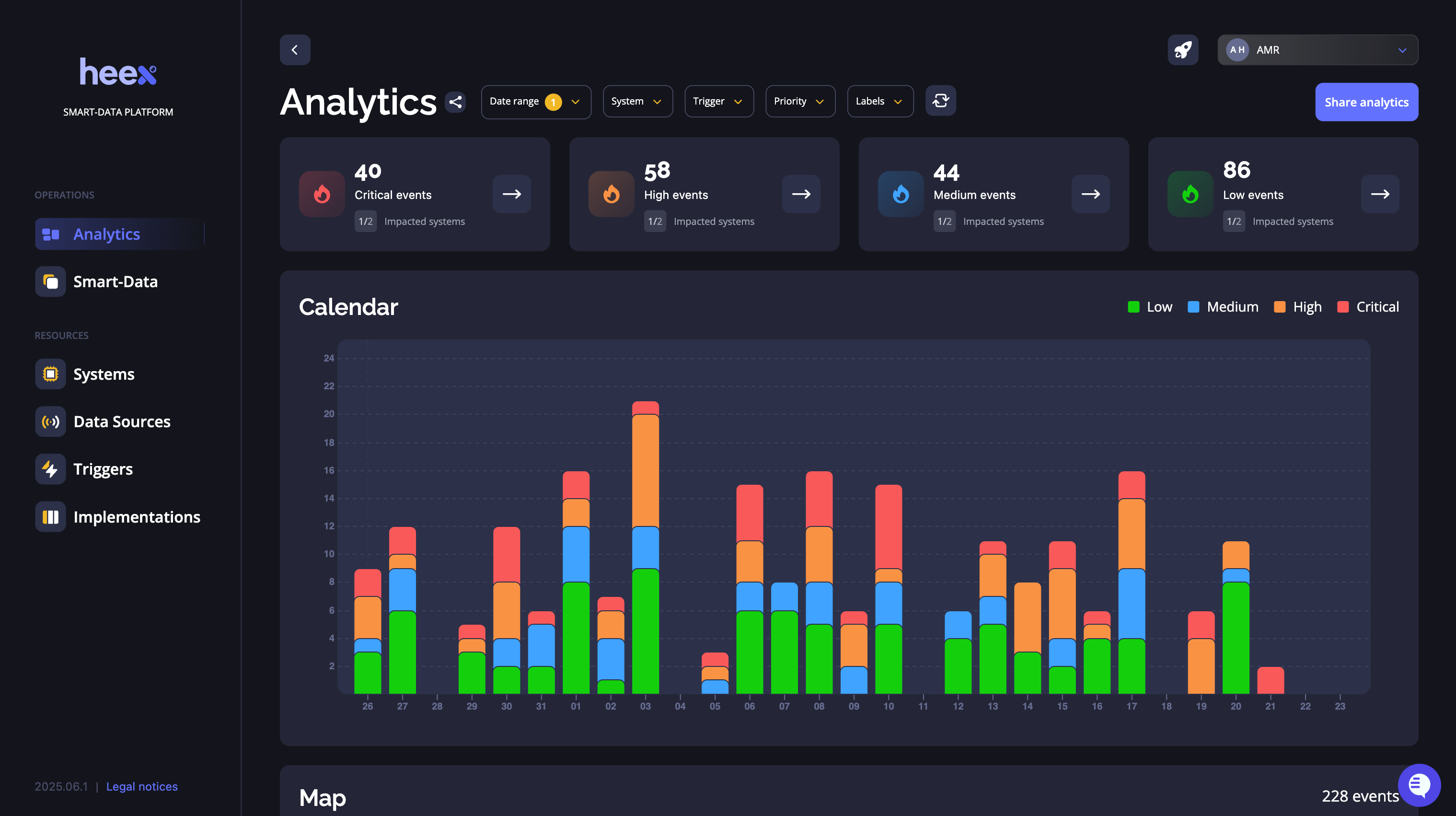 What you’ll see:
What you’ll see:
- System performance metrics
- Event frequency analysis
- Data capture statistics
Common uses:
- Monitor system health
- Identify patterns
- Track data collection efficiency
Go to the dedicated documentation
2. Smart-Data View
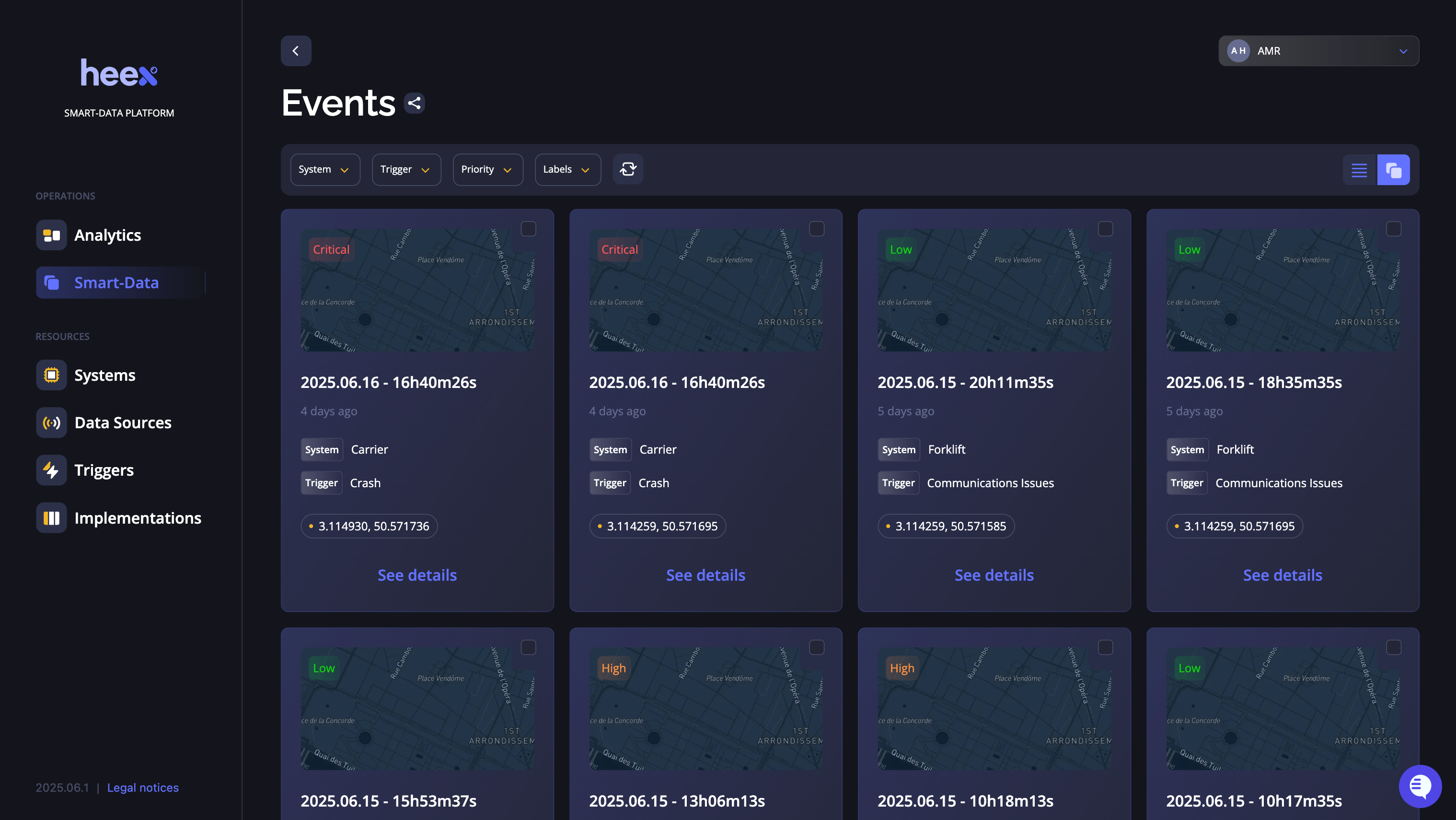 What you’ll see:
What you’ll see:
- Captured events with their recordings
- Automatic event tags
- Filtering and search tools
Common uses:
- Investigate incidents
- Analyze patterns
- Export relevant data
Go to the dedicated documentation
Configurations Views
Designed for both non-experts and experts alike to describe systems capabilities, declare data needs as data capture scenarios, monitor status on developers progress on custom implementations from the Heex SDK.
1. System View
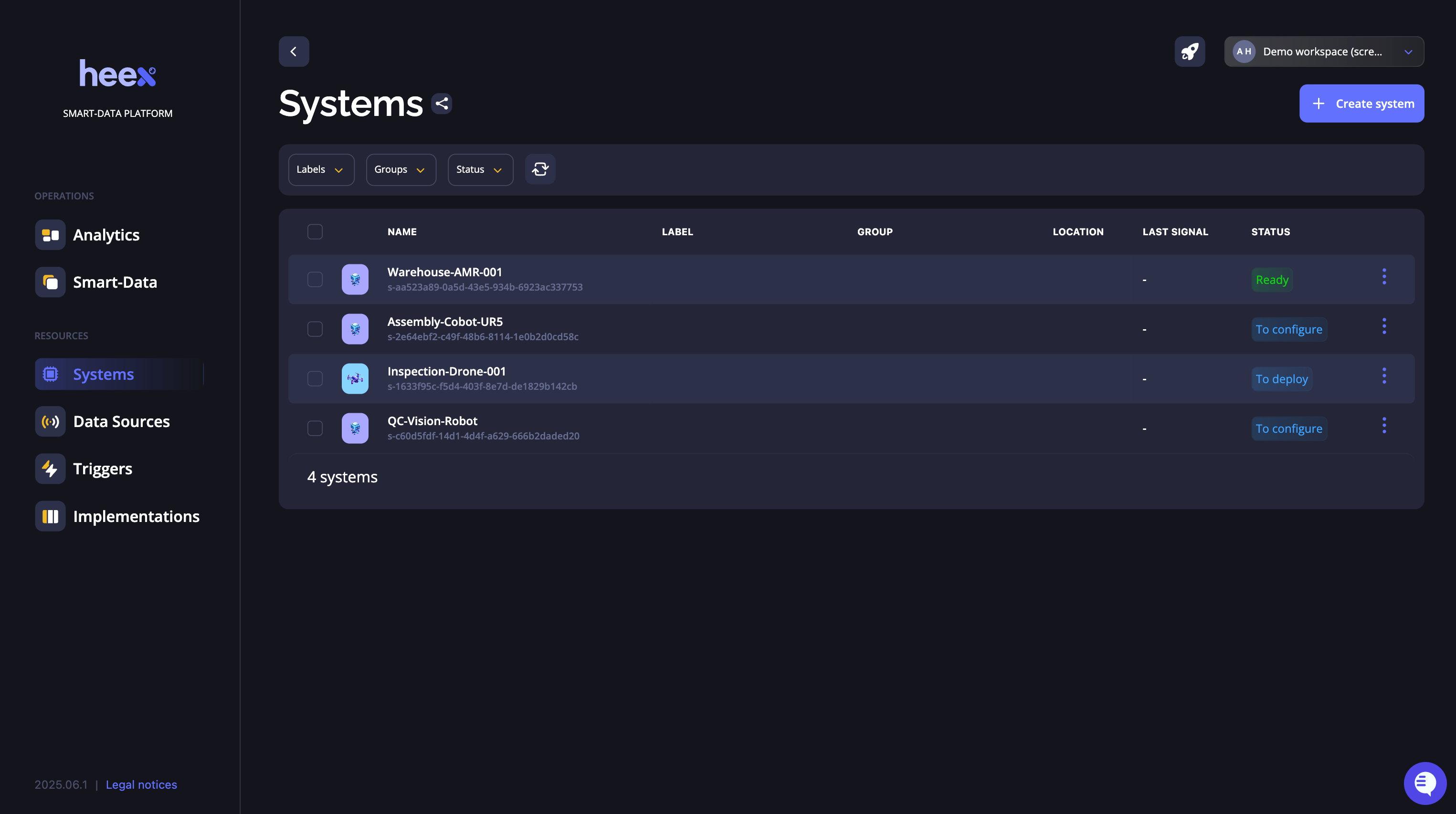 Centralized management of system descriptions, technology stacks, available data to monitor and record, and trigger deployments statuses.
What you’ll see:
Centralized management of system descriptions, technology stacks, available data to monitor and record, and trigger deployments statuses.
What you’ll see:
- Overview of all connected systems, their status, and configurations
- Options to add/remove systems and apply data capture scenarios
Common uses:
- Monitor overall system status at a glance
- Identify systems needing attention or updates
- Configure system settings for improved data capture
Go to the dedicated documentation
2. Trigger View
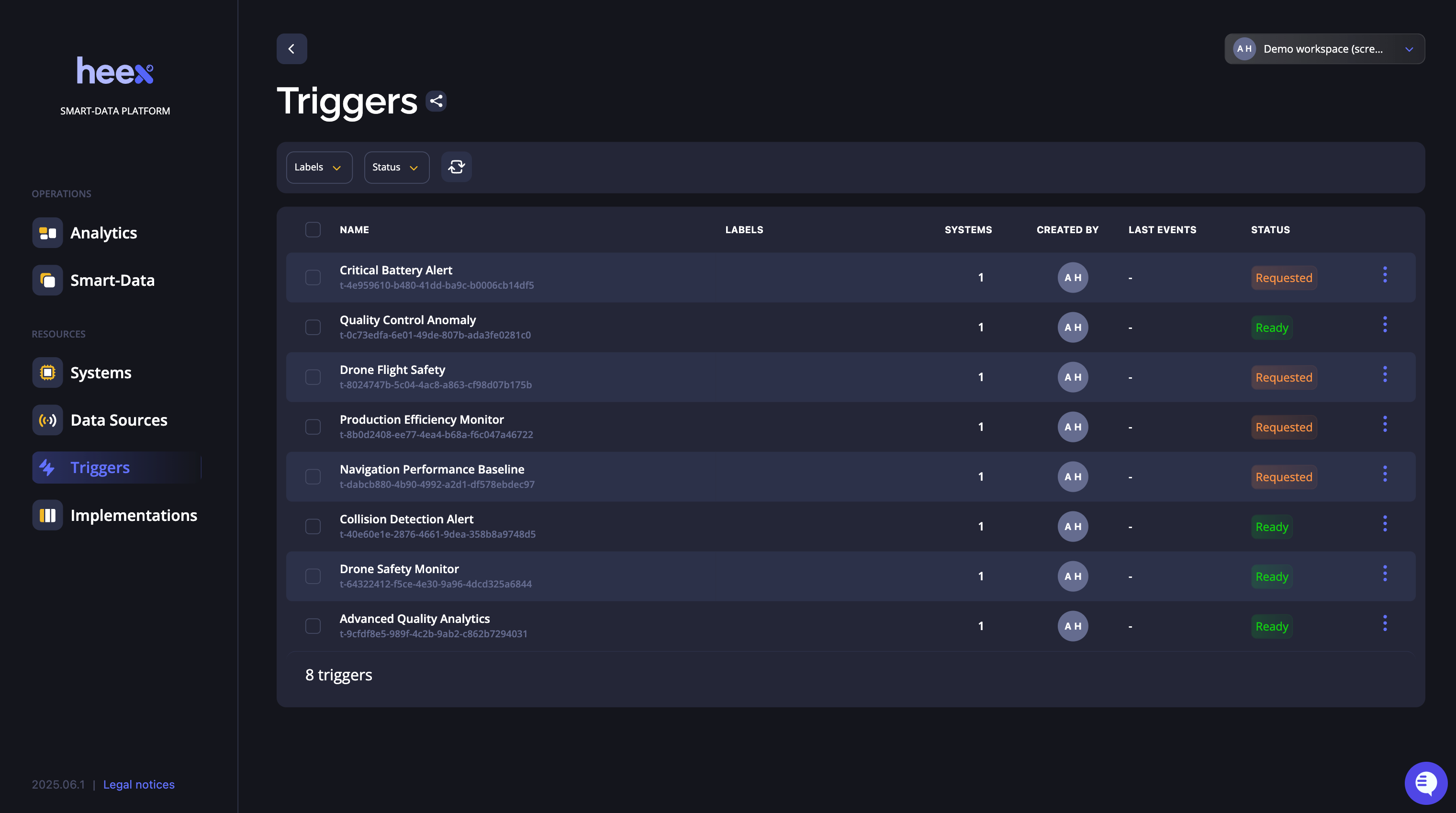 Business-level description of data capture scenarios, implementations, and deployments management across target systems.
What you’ll see:
Business-level description of data capture scenarios, implementations, and deployments management across target systems.
What you’ll see:
- List of all active and inactive data capture scenarios
- Overview of their status and health
- Ability to manage them (add/remove conditions, customize captured data)
Common uses:
- Review and adjust triggers based on quality and quantity of collected Smart-Data
- Enable/disable/modify data capture scenarios as needed
- Apply or Remove data capture scenarios from system groups
Go to the dedicated documentation
3. Implementations View
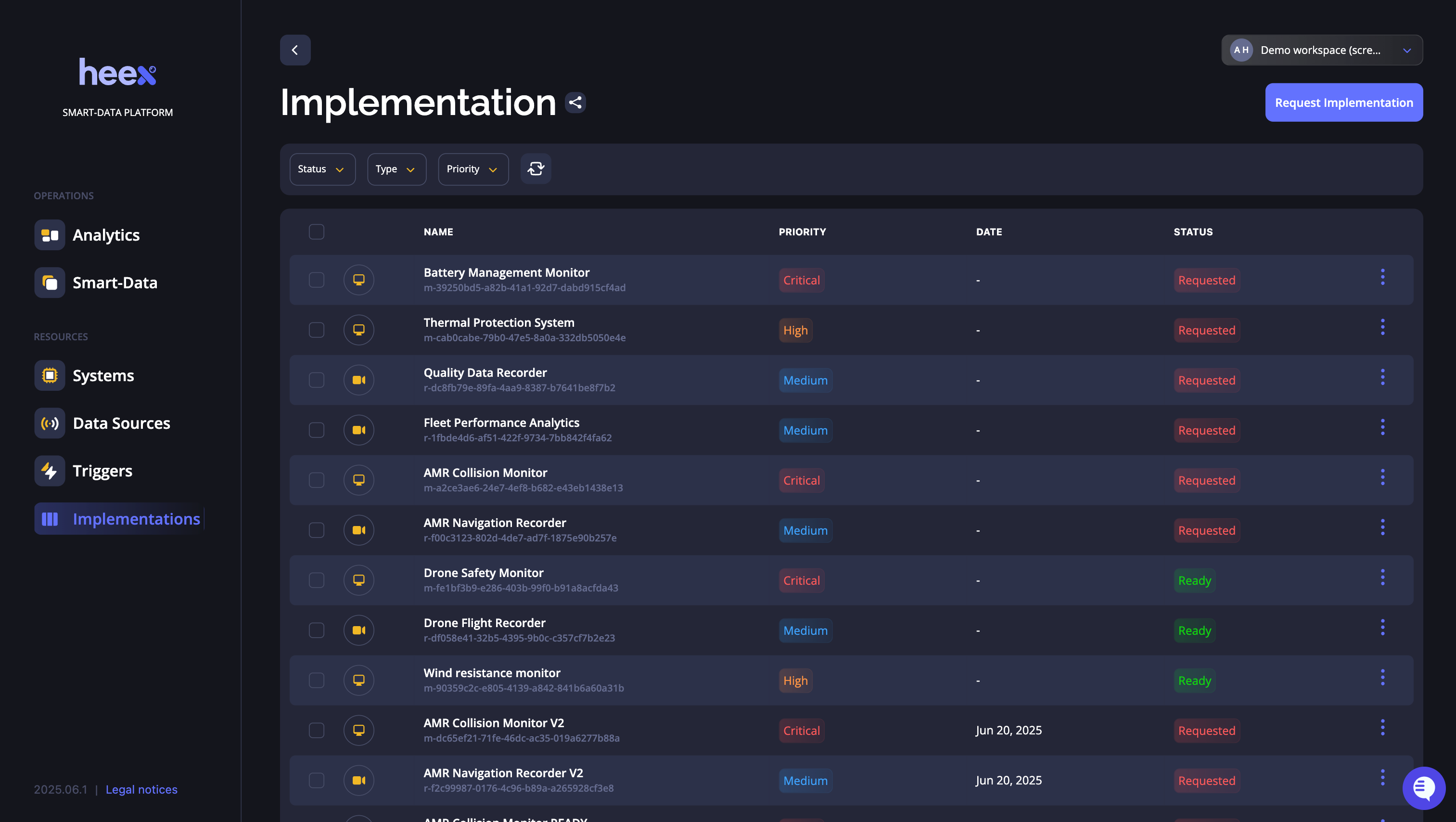 Structured tracking of implementation statuses and reporting with necessary information for implementing Heex Agent’s monitors and recorders based on the Heex SDK.
What you’ll see:
Structured tracking of implementation statuses and reporting with necessary information for implementing Heex Agent’s monitors and recorders based on the Heex SDK.
What you’ll see:
- List of implementation requests prioritized by urgency
- Status of current implementation tasks (pending, in progress, completed, etc.)
Common uses:
- Build custom data capture implementations
- Facilitate communication among team members regarding implementation statuses
Go to the dedicated documentation 



